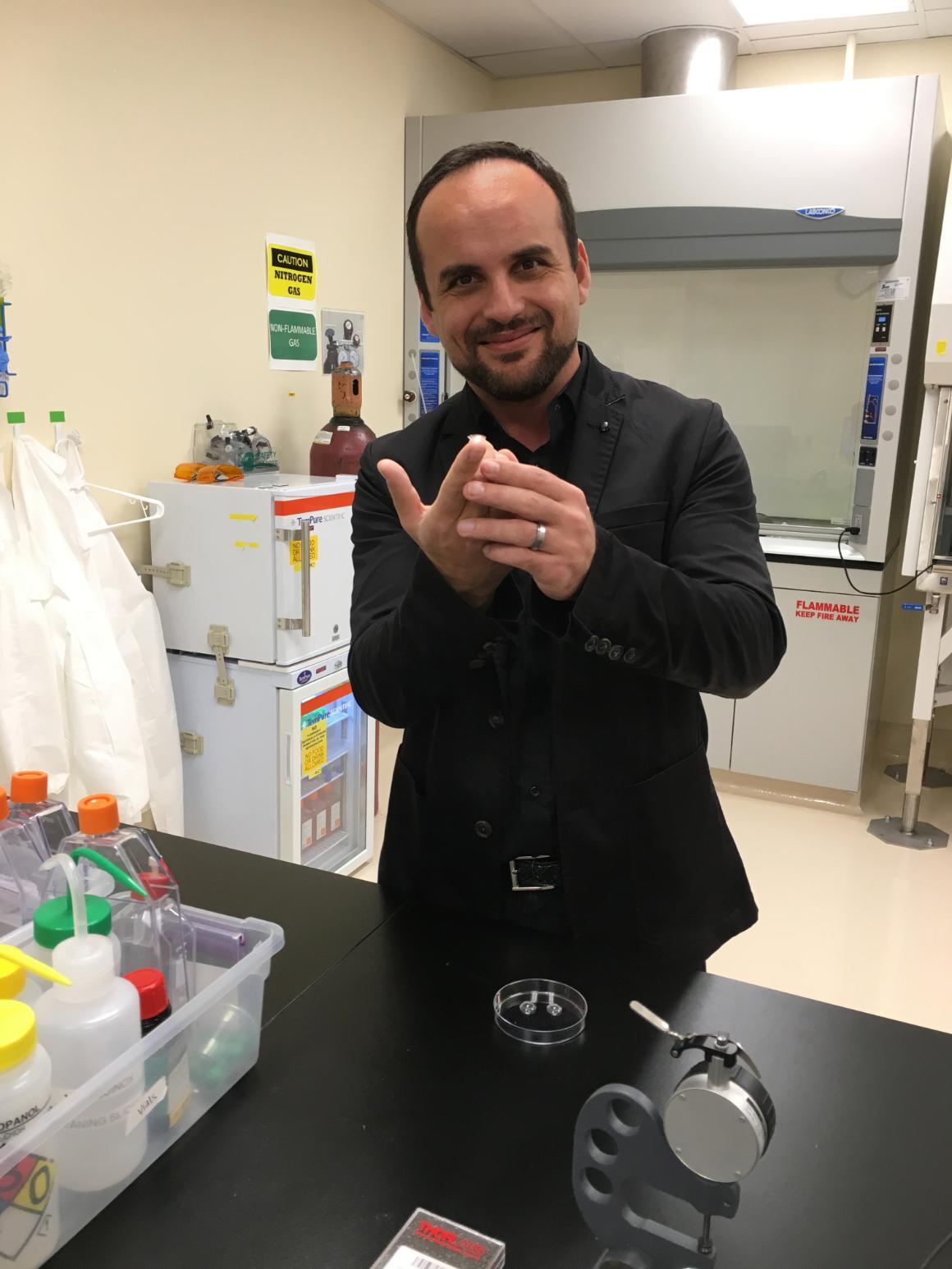
We Have Contact
Glaucoma, the leading cause of irreversible blindness, afflicts 4 million Americans (and 70 million people worldwide), and those numbers are climbing. Often the disease—characterized by elevated intraocular pressure (IOP)—arrives without warning, but early detection can prevent vision loss. Bioengineering Assistant Professor Emre Araci and his team of student researchers believe they have just the right tool to help people detect changes in their eye pressure—a daily use soft contact lens with a highly sensitive built-in sensor.
Before joining the SCU faculty, Araci, whose background is in microfluidics and optics, was at Stanford University, where his team built an IOP detecting device for implantation into the eye during cataract surgery. It was quite a breakthrough; however, the nature of the procedure limited the potential to reach a wide population. He decided to build a soft contact lens version.
“This was a bigger problem than we had tackled previously,” he said. “Measuring pressure from a sensor inside the eye is relatively easy; measuring it from the outside is challenging. While some devices do this now, they require a physician to take measurements, and they don’t afford the comfort and convenience of soft contact lenses. My idea was to help the patients get measurements at home with the use of a contact lens that could interface with a smartphone.” So, two years ago when he arrived at SCU, he recruited two graduate students and one undergraduate to help with his research. After six months building their lab, they began making microfluidic strain sensor microchips that would be embedded in the contact lens.
“Every step has been done here at SCU. In addition to my lab, we use SCU’s Center for Nanostructures, and the students have been involved in every step along the way, from development of processes to design and prototyping,” he explained.
One stumbling block was finding a material that would combine the comfort and safety of standard soft contact lenses—flexibility, air permeability—with the rigidity needed to maintain the integrity of the on-board sensor. “Things really started to get exciting when we began combining different technologies, microfluidics and metamaterials,” Araci said. “Instead of getting thinner when they are pulled, metamaterials, or auxetics, get thicker; they don’t distort, they grow. Auxetics have been used in athletic shoes and contacts, but they hadn’t been applied to microfluidic technology in optics. For about a month, it was all I could talk about with my students. Eventually, we came up with a microfluidic metamaterial for our contact lens based intraocular pressure monitoring platform,” he said.
With prototypes soon in hand, testing began. The team built mechanical eye models to test their pressure-detecting lens and gathered results using both a microscope and smartphone images. They did the same with porcine eyes obtained from a butcher shop, receiving excellent results in each case. Araci said, “We put the contact lens on the porcine eyes and pressurized them. We were able to detect a 4-micrometer change in the radius of the eye—not centimeters, micrometers! To validate our findings, we purchased a commercial tonometer, the same equipment used in ophthalmologists’ offices, and ran the tests again, comparing those measurements to data gathered from our contact lens and smartphone. We verified that our sensor has a detection limit that matches the gold standard in ophthalmology.”
Next steps? “We’ll be collaborating with Stanford and UC San Francisco ophthalmology teams and glaucoma experts. We’re also working on getting Institutional Review Board approval for testing on humans,” said Araci. “This technology is very novel and the application is so interesting. There is great potential to solve a long-standing problem in glaucoma detection and treatment. People without the disease will be able to monitor their eye health and pressure changes that could lead to vision loss. Those with glaucoma would be afforded safe and comfortable long-term treatment management. Passively monitoring a patient’s ocular response to drug regimens or lifestyle changes will help both doctor and patient make informed treatment choices and will also assist in the validation, discovery, and efficacy of novel drug candidates. It’s very exciting!”
Bioengineering Assistant Professor Emre Araci with his groundbreaking contact lens. Photo: Heidi Williams